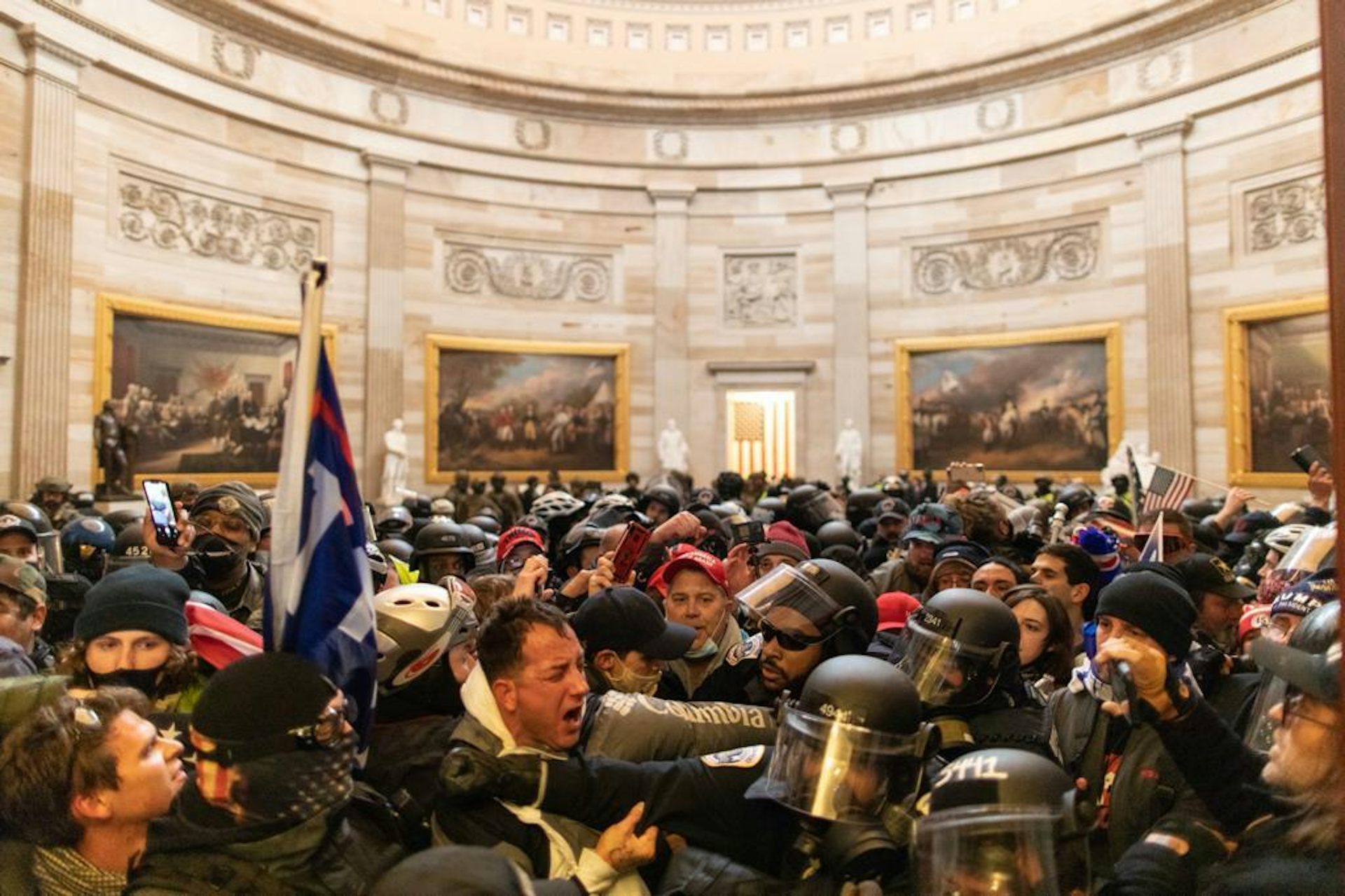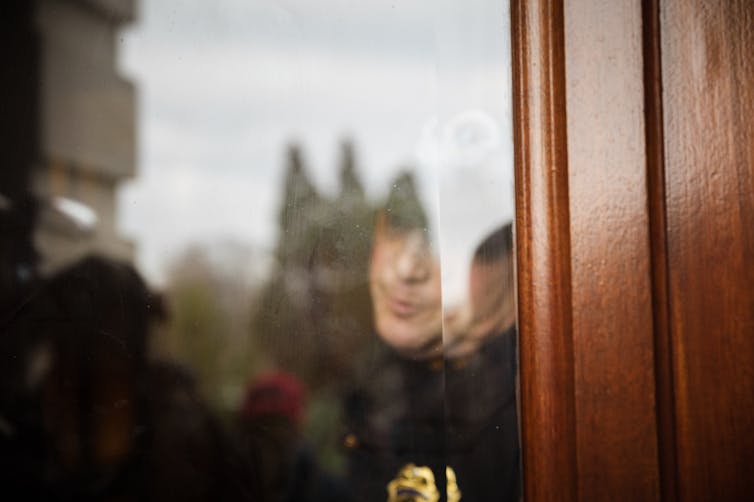
When die-hard Trump supporters are able to storm the U.S. Capitol and forcefully occupy offices in the House and the Senate, questions over security are going to be asked.
I am an academic criminologist who in an earlier life served as a senior policy adviser at the Department of Homeland Security. Moreover, as a 27-year veteran of the Boston Police Department, I have firsthand experience of major policing operations.
Something clearly didn’t go to plan on Wednesday. The man in charge of policing that day, U.S. Capitol Police Chief Steven Sund, has since announced he is resigning. But even with him gone, what will remain are serious questions that will need to be answered about how an angry mob was able to circumvent security and enter the Capitol building.
Was there a failure of intelligence?
Washington, D.C., is one of the most heavily policed cities in the world. The U.S. Capitol Police is a force that numbers around 2,000 officers and operates with an annual budget of US$460 million. Their job is to protect the U.S. Congress. There is every reason to believe that they should have known that Trump supporters intended to descend upon the Capitol with the intention of thwarting the peaceful transfer of power to President-elect Joe Biden.
After all, Trump has been signaling his followers on Twitter for weeks, promising on Dec. 19 that the day would “be wild.” Meanwhile some of his supporters in the MAGA world have made no secret of their intention to disrupt the ratification of the Electoral College votes by the Congress. And on the day itself, Trump urged a crowd to march on the Capitol.
And police in D.C. would not have been operating on their own. The Department of Homeland Security’s Office of Intelligence and Analysis coordinates intelligence-gathering activities between and among state, local, tribal and territorial law enforcement agencies and likely would have – or certainly should have – been aware of the activities of some of the attackers and their plans to storm the Capitol on Wednesday.
Additionally, the U.S. Capitol has its own dedicated intelligence “fusion center” – the National Capital Region Threat Intelligence Consortium. This center serves to identify, collect, analyze and disseminate threat-related intelligence to law enforcement. It is certainly fair to question whether these intelligence-gathering organizations were aware of plans to attack the Capitol and whether they communicated that information to the Capitol Police.
The ease with which assailants were able to breach security at the Capitol building appears to suggest there wasn’t enough intelligence for police to prepare appropriately.
How were Trump supporters able to breach the barriers?
That apparent lack of intelligence may have contributed to the police being outnumbered and outmaneuvered. Video images depicting the assault show police running away from protesters. Many police officers in the video footage I have seen are not wearing protective equipment or headgear and do not appear to be carrying assault rifles and other weapons commonly seen when facing anti-racism protests.
There will be questions as to why more resources were not deployed – in regards to both the number of officers and blockades to protect the Capitol. The Capitol Police had more than sufficient time to erect heavy-duty crowd control barrier fencing in multiple rows around the entire perimeter of the Capitol building; this is a basic crowd-control technique and one not in evidence during the siege.

Likewise, police chiefs could have deployed sufficient numbers of uniformed personnel, equipped with riot gear – something akin to the commanding police presence seen in the anti-racist protests in U.S. cities in 2020 – to be able to effectively deter, and if need be to confront and to disperse, the number of rioters who converged on the Capitol. We saw no police in Mine-Resistant Ambush Protected vans or other military-type vehicles, none on horseback or on motorcycles, and certainly nothing akin to what was on display at the Lincoln Memorial in June 2020 during the anti-racism protests there.
Without this in place, Trump supporters breached the barriers leading into the building with the apparent acquiescence of the police. In fact, officers seemed to offer little to no resistance to the assault and the breach in the initial stages. And some officers were even seen seemingly posing for selfies with the rioters.
Before his resignation, Police Chief Sund said in a statement Thursday that the department had “a robust plan” in place to deal with any attack. But there appeared to be little evidence of that during the siege.
[Expertise in your inbox. Sign up for The Conversation’s newsletter and get expert takes on today’s news, every day.]Would the response be different if the protesters had been Black?
Many observers have noted that those carrying out the siege at the Capitol were predominantly white, and they were met with a strikingly different law enforcement response than protesters who took to the streets in the aftermath of George Floyd’s killing. This has led to a legitimate question: If the protesters storming the U.S. Capitol Building had been Black, would they have been met with a similar response from officers?
Even though it is difficult to speculate on hypotheticals, one would have to consider the heavy-handed, often violent tactics employed by the police in Washington, D.C., in past protests as well as in a host of U.S. cities, from Minneapolis to Portland to Louisville to Atlanta and Boston.
There can be little doubt that there were pronounced differences Wednesday in the levels of violence and excess that the police have been all too willing to engage in when protesters are calling out police violence, racism and brutality, especially when those protesting are Black. The evidence of this disparity is overwhelming and is indicative of the institutional and endemic racism that has characterized much of American policing throughout a history that goes back to the 19th century.
Consider the consistent body of research that shows that Black suspects are more than twice as likely to be killed by police than other racial or ethnic groups. Fatal Force, the Washington Post’s database of police deadly force incidents, documents annual figures beginning in 2015. It shows that Black Americans are two and a half times more likely to be killed by police than white Americans.
Is there a case to say the police did a good job?
Some would no doubt argue that the police at the Capitol kept a bad situation from having a worse outcome and that officers exercised prudent restraint in their dealings with the MAGA rioters. Four people died in the attack on the Capitol, including one woman who was shot dead by police – it was later announced that an officer died of injuries sustained during the siege – and there is no way of knowing if the toll would have been higher had officers showed less restraint.
Yes, there have been dozens of arrests since Wednesday. But to my knowledge, it has never been the strategy of a police department to deliberately let violent attackers go only to arrest them later. For one thing, tracking them down is difficult if not impossible after the event.
To many policing experts this was nothing short of an international embarrassment for American law enforcement and a searing indictment of a police department that appeared to be caught completely unprepared. As Charles Ramsey, a former D.C. police chief, told The New York Times: “How they were not ready for this today, I have no idea. They were overwhelmed, they did not have the resources. You have to be able to protect the Capitol. That is not OK.”![]()
Tom Nolan, Associate Professor of Sociology, Emmanuel College
This article is republished from The Conversation under a Creative Commons license.

